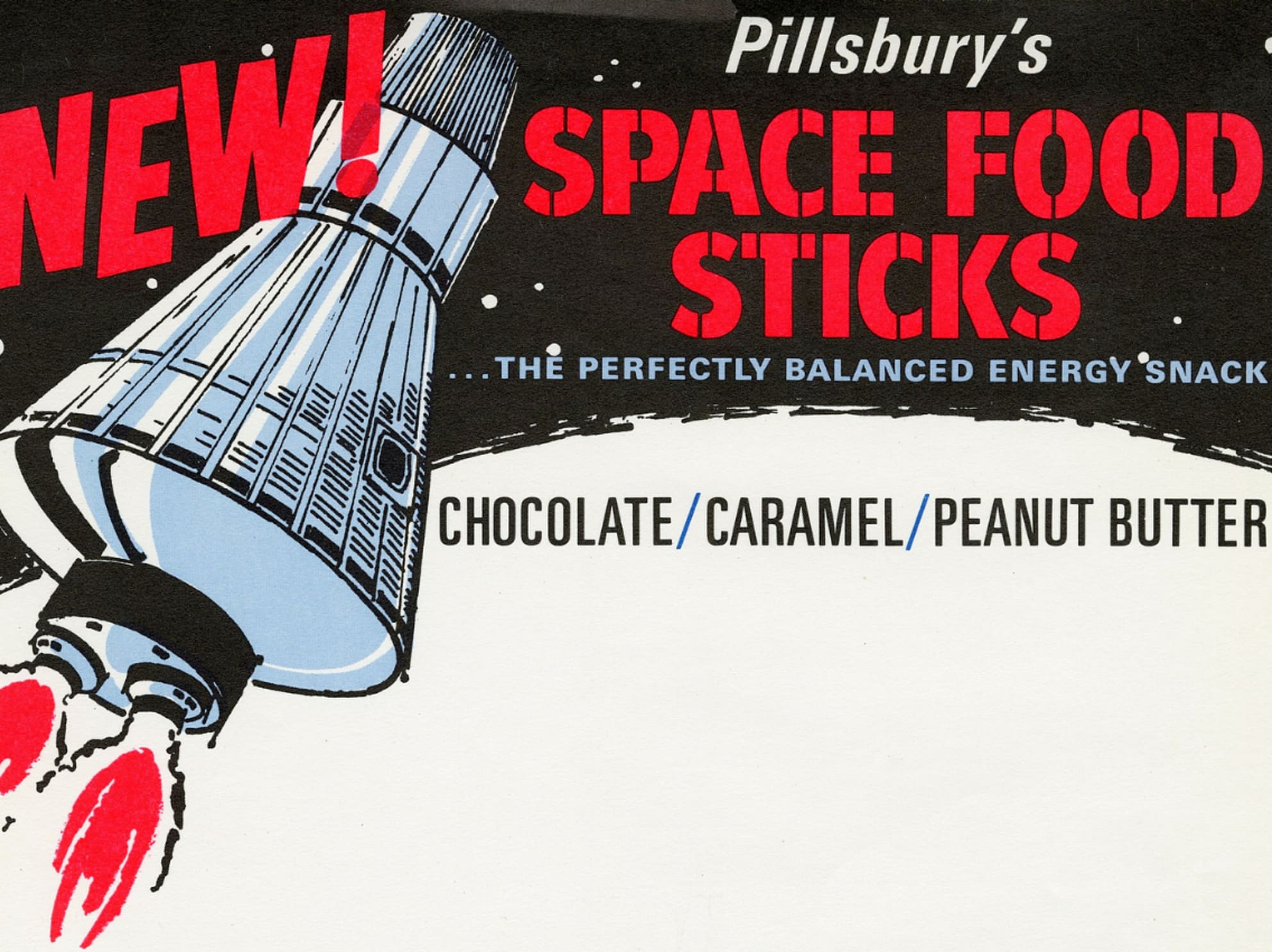
How it started

The space food innovation journey for Pillsbury – to create what would eventually become “Space Food Sticks” for several Apollo missions and Skylab – actually started in the early 1960s.
Howard Bauman, Pillsbury’s chief food technologist at the time, led a team at the company that created the first solid food consumed by a NASA astronaut. Scott Carpenter ate small “compressed” food cubes made by Pillsbury on board Aurora 7 in 1962.

By the way, as part of his work with NASA to make sure food was safe for astronauts, Bauman also played a key part in establishing the Hazard Analysis and Critical Control Points (HACCP) regulations used for food safety. HACCP was a significant development for the food industry. It focused on the prevention of potential food safety issues, not just inspection. It’s still used in several industries today around the world, from production and preparation to packaging and distribution.

After the food cubes, the Pillsbury team developed a non-crumbly cake for NASA, and other items, coated in their own “space suit” that would protect them until consumed.
Pillsbury’s space food innovation journey
Then NASA had a request. Could Pillsbury’s best and brightest also make a food that astronauts could eat with their helmets on?
The snack had to be small enough to go through a small airtight opening in the helmet – so the rod-shaped food sticks were born, as the Apollo program drew closer to its historic moment.
Our search of documents in the General Mills Archives shows that the sticks accompanied astronauts Neil Armstrong and Buzz Aldrin when their “Eagle” spacecraft landed on the moon on July 20, 1969. The sticks were considered a “contingency” food for Apollo, only to be eaten in an emergency. So we don’t know if Armstrong or Aldrin actually ate them before or after walking on the moon.

Pillsbury began advertising the sticks on television, as Space Food Sticks, clearly making the link to the space program.
The “perfectly balanced energy snack”
The consumer version of the “perfectly balanced energy snack” was slightly modified, and a shorter version of the food sticks eaten by astronauts. They came individually-wrapped, in similar flavors to what the astronauts enjoyed, like chocolate, caramel and peanut butter.

The nutrient-packed food was an excellent source of nutrition. During a two-week study conducted at St. Luke’s Hospital in New York City, a woman was reported to have maintained her weight and health on 40 Space Food Sticks per day as her only source of nutrition.
he sticks stuck around for the next four Apollo launches. During the infamous Apollo 13 mission, when the crew had to abort their moon landing, the sticks were integrated into the daily menu for the three astronauts on board.
Meanwhile, for consumers, Pillsbury also prepared promotional materials about Space Food Sticks, which highlighted their connection to the space program.

Pillsbury “Food Sticks”
But in 1971, just two years after Armstrong and Aldrin walked on the moon, Pillsbury decided to drop ‘Space’ from the advertising for the sticks, and ultimately from the product name.
John Szafranski, a grocery product manager for Pillsbury at the time, said, “We used the word ‘Space’ because of the NASA project, because the product did indeed go to outer space, and because they were first marketed at a time when public excitement about the space program was at a peak.”
He added that Pillsbury stopped using ‘Space’ in the product name because “the image that space food has in the minds of many consumers is a negative one. They think space food in general is dry – dehydrated – and not necessarily very tasty.”

Pillsbury “Food Sticks” were remarketed as “an energy snack that gives you the balanced nutrition of a miniature meal” and as “the food for busy people.” Pillsbury also slowly changed Food Sticks from being called a “balanced nutrition snack” to a “balanced nutrition food.”
You can see that in this commercial, which focused on nutrition, but kept ‘Space’ on the box.
In 1973, a modified version of the commercially available Pillsbury Food Sticks was included on the third Skylab mission, as a NASA press release indicated.

While the Skylab mission was scheduled for 60 days, including the sticks in astronaut meals every third day would enable the mission to be extended to 85 days, while only adding an additional 59 pounds in the weight of the cargo the crew brought.
The success of Pillsbury Food Sticks was short-lived. They were only available until the 1980s, as waning interest led them to be discontinued. Other copycat versions soon became available in their place.
Space Food Sticks appeared in pop culture over the years, including on “The Simpsons,” in the movie “Super 8” and in books from R.L. Stine.
The lasting legacy of Pillsbury’s Space Food Sticks in the food industry – beyond their connection to space history and food safety – is that they’re considered to be the forerunner of the many popular energy bars available today.
